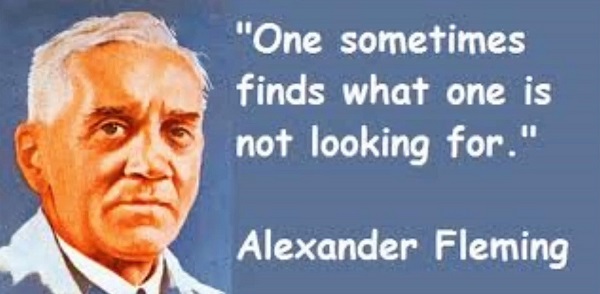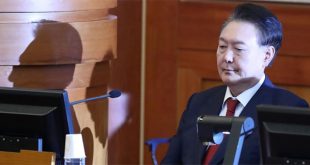
Stockholm, Sweden | AFP |
It’s serendipity: from America to Viagra, history is full of great discoveries helped along by chance, as more than a century of Nobel prizes can attest.
Among the chance discoveries that have been honoured with the prestigious prize are X-rays (physics, 1901), penicillin (medicine, 1945), fullerenes that paved the way for nanotechnology (chemistry, 1996), conductive polymers (chemistry, 2000), and the bacteria responsible for ulcers (medicine, 2005).
But, as the father of pasteurisation Louis Pasteur noted in 1854, “In the fields of observation, chance only favours the prepared mind” — a remark made in reference to the discovery of the link between electricity and magnetism by Danish scientist Hans Christian Orsted.
Orsted happened to notice that a compass needle deflected from magnetic north when an electric current from a battery was switched on and off — a pioneering discovery in electromagnetism.
Like Pasteur, Dutch scientist Pek Van Andel also believes in the unexpected.
But, he insists, it’s not just a matter of luck.
The unexpected often comes after a relentless search — and only to those with keen intuition.
“Generally I don’t believe in accidental findings but in accidental observations. I often refer to the metaphor of the flowers: you can find flowers along the road which are even more interesting than the flowers you were looking for,” he told AFP.
An expert on discoveries made in unusual circumstances, he has tallied more than 1,000 such cases, some dating back to pre-historic times.
Over the years, philosophers and artists alike have shown an interest in the phenomenon, with some even seeing a higher power at work.
Greek mythology tells the classic tale of serendipity: asked to find goddess Demeter hiding in a cave, Pan, an avid hunter, prefers to roam the forests of Arkadia in search of game — where he unwittingly falls upon Demeter.
In 1754, English philosopher Horace Walpole coined the word “serendipity,” forming it from the Persian fairy tale “The Three Princes of Serendip” (a former name for Sri Lanka) whose heroes “were always making discoveries, by accidents and sagacity, of things they were not in quest of”.
The absent-minded professor
Among the fortuitous discoveries that changed the world, perhaps the best known example is that of Christopher Columbus, who thought he had found the western route to East Asia when he discovered, for Europeans, the Americas.
Other examples fill science books.
In 1895, Germany’s Wilhelm Roentgen was studying the phenomena accompanying the passage of an electric current through a gas at extremely low pressure.
“By accident,” he says, he found “that the rays penetrated black paper.” Not knowing exactly what it was, he called it an X-ray. He was rewarded with the first Nobel physics prize awarded in 1901.
In 1928 in London, Scottish biologist Alexander Fleming had returned from vacation and was cleaning bowls in his lab where bacteria cultures had been growing.
He noticed fungus mould had begun to grow in a bowl of staphylococcus culture — and the mould had created a bacteria-free circle around itself.
Fleming named the active substance in the mould penicillin, after the Penicillium mould. But, frustrated at the laborious effort to purify the mould and doubtful it would work in humans, his work ended there.
It took another bit of serendipity to turn penicillin into the world’s first antibiotic. In 1938, exiled German-born Jewish biochemist Ernst Chain stumbled upon Fleming’s published study while flicking through a medical journal. He painstakingly isolated penicillin and successfully tested it on lab mice and then on human volunteers
Fleming and Chain shared the 1945 Nobel Prize for Medicine with Howard Florey, who helped scale up penicillin production, creating a lifesaver.
Similar chance findings led to the discoveries of the microwave oven, DNA structure, Viagra (discovered when researching angina), the Post-it, and much more.
Pek Van Andel has established three categories of serendipity:
— pseudo-serendipity (Fleming finds what he is looking for, albeit by chance);
— positive serendipity (Roentgen finds something he’s not looking for, and confirms it through further study); and
— negative serendipity (Columbus finds something he’s not looking for… and the discovery is not studied further by the discoverer.)
Bridges or holes?
For Mark de Rond, a University of Cambridge ethnographer who has written on the subject, “serendipity is routinely but mistakenly used as synonymous with chance events, luck or providence.”
Rather, serendipity results “from identifying ‘matching pairs’ of events that are put to practical or strategic use.”
“It follows that human agency, and not probability, is properly the focus of attention.”
The common factor in serendipitous scientific discoveries is that they were all “made by individuals able to see bridges where others saw holes.”
 The Independent Uganda: You get the Truth we Pay the Price
The Independent Uganda: You get the Truth we Pay the Price



